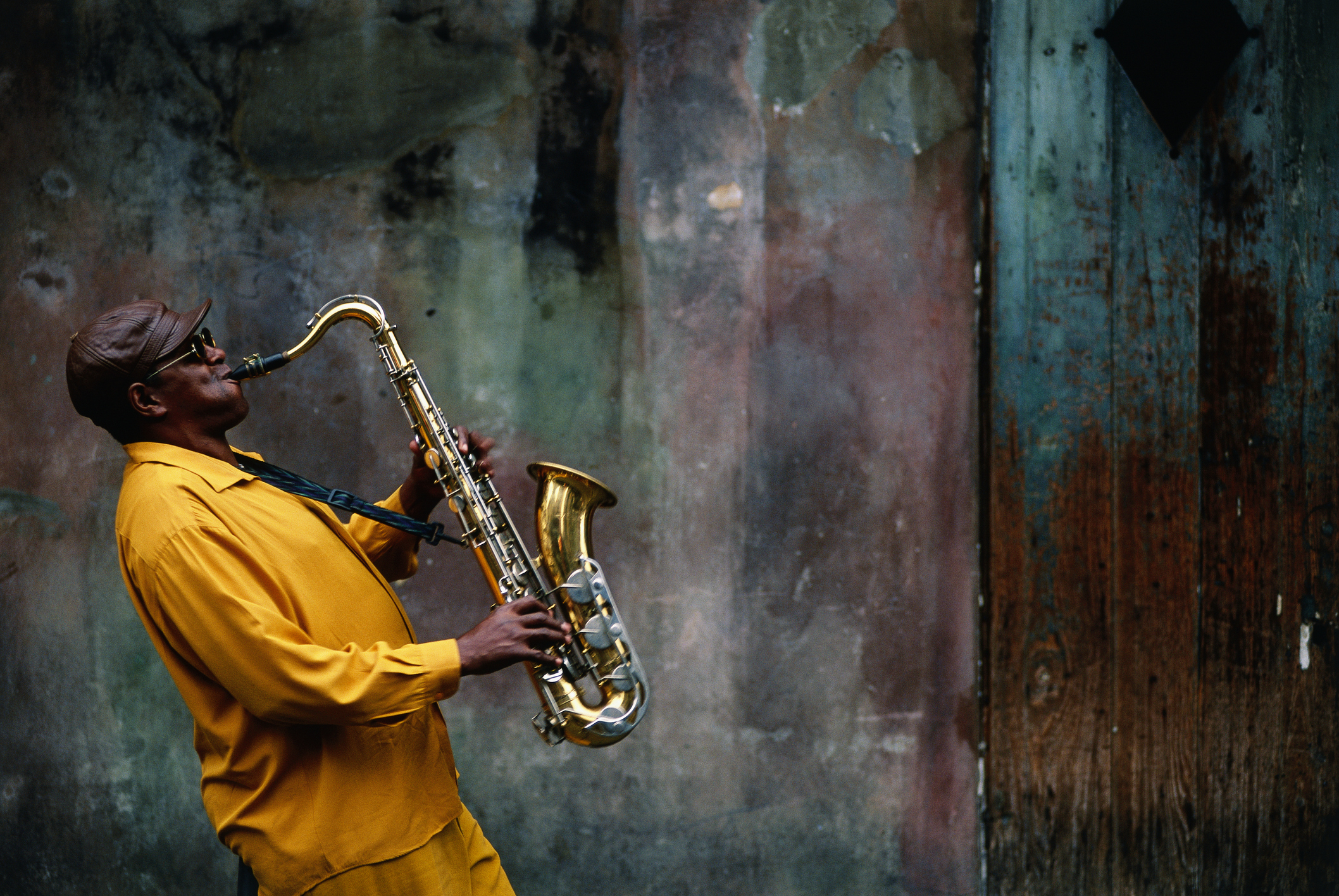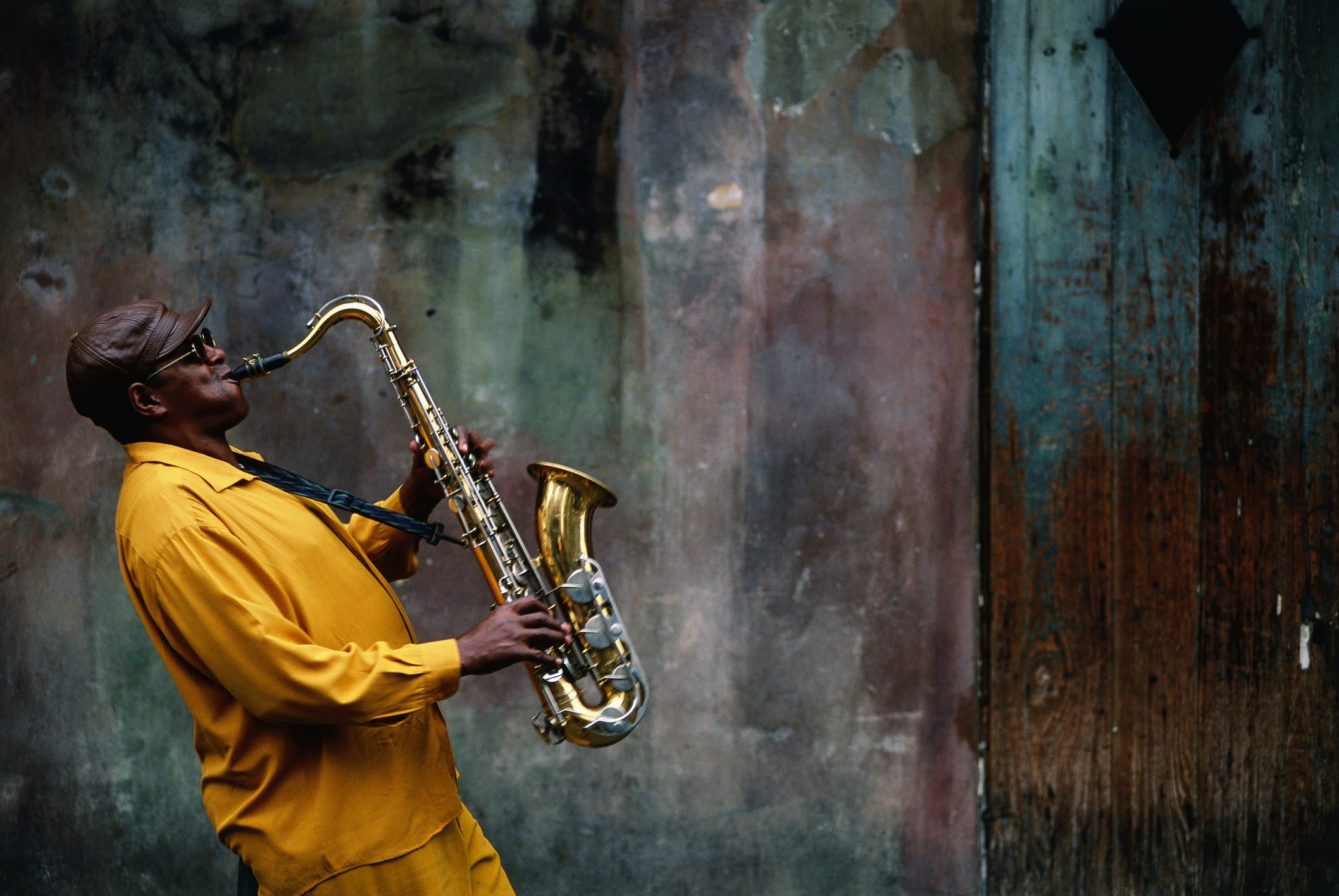
Despite traveling the world as an architect for 20 years, some of the best places I've ever visited were in my head – destinations that can't be found on a map, but still require an artist’s journey to reach.
I’ve learned the value of seeking influence outside my profession, and it’s helped me attract some of the world's wealthiest clients and fundamentally altered how I experience design. After all, life is more psychology than reality, and how you think frames everything.
Here are five mental models that should be on every designer's bucket list, not for the Instagram moment (these famous buildings are better for that), but for the mental transformation they offer.
01. Play a musical instrument – it will change your design practice

There’s a saying I love from the music world: “The tone is in the fingers.” It’s something guitarists say – meaning you can buy all the right gear, but the sound still comes from you. Your hands. Your finesse. Your brain. You can buy the best guitar and pedals used by the best musicians, but you won't play like them. The same chords by a different person is a different song.
I played guitar for years, and I started to understand this concept. Mind and skill resonated at the tip of my finger, where it met the instrument.
That phrase stuck with me, and ever since, I have started paying attention to my pen. As an architect, it is my instrument for thinking and designing. I realized that pen grip affects mental altitude. Just like a musician selects a pick or adjusts their grip on the instrument, designers can control how they think based on how they draw.
So now I’m conscious of it. A fine-liner held close to the nib immediately puts my brain in detail mode. While a thick marker, softly held far from the nib, lets me think in high-level concepts. And the distance between my hand and the nib? That’s how close or far I am from the idea.
My lesson from music is: Your choice of pen and where you hold it, is the resolution you think in. It changed my life as a designer and the quality of my thinking. (This list of best pens will help!)
02. Visit a wine estate – they're a masterclass in experience design

Of the many spaces I’ve visited for architecture, wine estates have been the most instructive.
The moment you turn off the main road, your tires hit gravel. There is a crunchy sound, and it forces you to slow the car down. You’re welcomed by a line of trees framing your arrival like royalty. Before taking a single sip, you might tour the grounds, vineyards, the manufacturing facilities.
Then comes the glass: a tall, slender stiletto with a fine bulb shape, misting with condensation. The pour is small. You’re not meant to drink a big gulp —you’re meant to savour. You sip slowly. You speak quietly. You feel sophisticated.
Wine estates are not buildings. They’re performances. Every texture, every sound, every sightline contributes to a feeling of calm, prestige, delight. It’s a brilliant psychological experience designed to change the taste of sour grapes.
And that taught me a lesson I never learned in the studio: how you frame an experience is the experience. The vineyard sommelier once said to me, “Our wine in a plastic cup will taste the same, but your experience will be very different.” This is because the frame is more important than the picture. Great design companies like Apple do the same thing – their stores are designed like a cathedral for the iPhone to echo in. Their minimalist tables frame their products like jewels on an altar.
This psychological journey must be experienced firsthand by architects and interior designers. From how we present drawings to how we guide clients through site walkthroughs, if the work isn’t framed well, it’s lost. Framing is the difference between “nice design” and “I want to live in this house.”
It doesn’t matter where, and it doesn’t matter how luxurious. Visit a wine estate and savour where your mind goes.
03. Study editorial copywriting and ads
The greatest realisation I’ve had as a designer is that there’s a direct link between my interest in copywriting and advertising and my ability to attract ultra-high network clients around the world.
When I first visited Santiago Calatrava’s bold, outrageous, and engineeringly courageous skeleton structures, I immediately thought to myself, ‘How the heck did he sell this to the client and planners?’ Many architectural feats and interior marvels never see the light of day because the designer did a poor job pitching them. Great designers know this. Calatrava knows this.
Architects and designers sell dreams, not buildings, egos, not rooms, a feeling, not a space. They pitch with words and imagery every day, whether through a hand sketch, a 3D model, a rendering, a mood board, or blueprints.
Architects and designers need to bring each client to each new world, to see the vision as they imagined it. This step in the process is where many great designs die. (Even when using the best 3D modelling software.)
Advertisers can teach us a lot about this dynamic because they study their target market customers deeply. They learn what makes them tick, their desires, interests, beliefs, and aspirations. They learn their audience and choose their words carefully, precisely, and deliberately. Great advertising isn't just great design—it’s great framing, great psychology, and great storytelling.
We need to understand how the client thinks and feels, and then how to communicate it to them with purpose and conviction. This requires control over language. Think about asking a client, ‘Can you call me back?’ vs ‘Will you call me back?’ One word can be the difference between a commitment and just an intent.
I recommend reading The Principles of Influence by Robert Caldini and Socratic Selling by Kevin Daley, or anything by Paul Arden. Understanding the language of ads and copy gives you command over the brain and your thinking. What you say to others, and for that matter, yourself, influences reality. Ralph Lifshitz, although born in the poor streets of the Bronx in the 1940s, was known as the best-dressed boy in school. Ralph knew the power of storytelling and wordsmithing and would later say, “I don't design clothes. I design dreams.” He would become the fashion designer Ralph Lauren. Architects and designers, don't sell the building, pitch the dream.
04. Embrace a solo activity you aren’t great at

Design is cerebral, and creativity is physical. We need both to survive in architecture and design, but too often, we live in our heads. When I spend too much time thinking, I forget how to stop thinking. And magic happens when you stop.
That’s why it’s essential for the artist in you to practice solo physical acts of making and straining.
I am a decent runner. Decent enough that I can think about my work when I run. But I am not a good surfer, so I think about not drowning when I surf. It’s one of those activities where you can't think of anything else while you are doing it — especially if you are bad.
When designing and solving problems, the obstacle is not always the problem; your mindset is. David Carr, the great journalist, once said, ‘Make something with your own dirty little hands.’ I return to that often. Drawing as a designer is a headspace game, but when you do something physical, it can really help your creativity and even change your mindset.
But the key is selecting a solo activity. Solitude is critical to creative thinking. No one ever gets into a ‘flow state’ in a team workshop. Creativity and ideas are sacred. The best time for them is in the moments where you have no interruption and can let go of your own thinking on the subject matter. Doing something physical helps with letting go.
For me, making something or doing solo activities like surfing is meditation for my creativity. It’s a creative catharsis.
05. Practice inversion thinking
One of the most powerful ideas I’ve come across in my career didn’t come from architecture school—it came from mathematician Carl Jacobi, who solved difficult problems by turning them on their heads. His famous advice was adopted by Charlie Munger: ‘Invert, always invert.’
Though I’m not solving equations or evaluating stocks, when I brought inversion thinking into my work as an architect, it became a design superpower. When a project stalls, when clients are stuck, or when a site feels uninspiring, I just invert the problem.
Instead of asking myself, ‘What should this space feel like?’ I ask, ‘What should it not feel like?’
Instead of asking my team, ‘What are you trying to achieve?’ I ask, ‘What are you trying to avoid?’
Instead of asking my clients, ‘What do you want in your home?’ I ask, ‘What do you absolutely not want?’
Inversion reframes problems, uncovers deeper motivations, and surfaces constraints we didn’t know we had. When I look at an uninspired or difficult site, I will often ask myself, ‘What is this site missing?’ and I start by designing the missing pieces from scratch. Even on a documentation level, it’s transformative: asking ‘What should this presentation not communicate?’ leads to sharper storytelling.
I’ve learned to use inversion across everything: site planning, client dialogue, design critiques. It’s become part of how I think as an architect and has completely changed my problem-solving. Not everything is solved by charging forward. Sometimes, the answer lives in the opposite direction.
No architecture book could have inspired that.
When you're ready to get back to design, try the best laptops for CAD.







